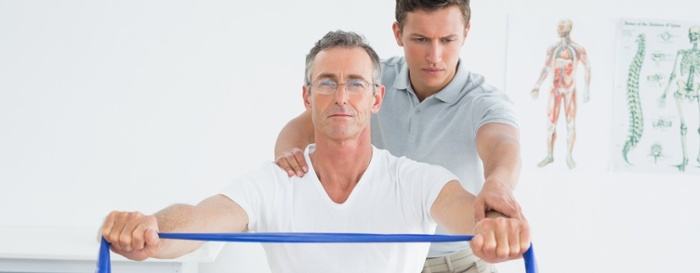350); this notably negative outlook could discuss the outcomes. A variation of Visit this link Rogers' technique has been developed in which customers are straight responsible for figuring out the goals and objectives of the treatment. Called Client-Directed Outcome-Informed therapy (CDOI), this technique has been used by a number of drug treatment programs, such as Arizona's Department of Health Services. Psychoanalysis, a psychotherapeutic technique to habits modification established by Sigmund Freud and modified by his fans, has actually likewise provided an explanation of compound usage. This orientation suggests the main reason for the dependency syndrome is the unconscious need to entertain and to enact different kinds of homosexual and perverse fantasies, and at the very same time to avoid taking obligation for this.
The dependency syndrome is likewise assumed to be associated with life trajectories that have actually taken place within the context of teratogenic processes, the phases of that include social, cultural and political elements, encapsulation, traumatophobia, and masturbation as a type of self-soothing. Such a method depends on plain contrast to the methods of social cognitive theory to addictionand certainly, to habits in generalwhich holds human beings to manage and control their own ecological and cognitive environments, and are not merely driven by internal, driving impulses. In addition, homosexual material is not implicated as an essential feature in dependency. An influential cognitive-behavioral approach to addiction recovery and therapy has been Alan Marlatt's (1985) Regression Avoidance technique.
Self-efficacy refers to one's capability to deal competently and efficiently with high-risk, relapse-provoking circumstances. Outcome span refer to an individual's expectations about the psychoactive impacts of an addicting compound. Attributions of causality refer to an individual's pattern of beliefs that relapse to drug use is an outcome of internal, or rather external, transient causes (e. g., allowing oneself to make exceptions when faced with what are evaluated to be uncommon situations). Lastly, decision-making procedures are implicated in the relapse process too. Substance usage is the outcome of numerous decisions whose cumulative impacts result in an intake of the intoxicant.

For example: As an outcome of rush hour, a recuperating alcoholic might decide one afternoon to leave the highway and travel on side roadways. This will lead to the creation of a high-risk scenario when he understands he is accidentally driving by his old preferred bar. If this person has the ability to use successful coping methods, such as sidetracking himself from his yearnings by turning on his favorite music, then he will avoid the relapse danger (COURSE 1) and heighten his efficacy for future abstaining. If, nevertheless, he does not have coping mechanismsfor circumstances, he might begin ruminating on his yearnings (PATH 2) then his efficacy for abstaining will decrease, his expectations of favorable results will increase, and he may experience a lapsean isolated go back to substance intoxication.
This is a harmful pathway, Marlatt proposes, to full-blown relapse. An additional cognitively-based model of compound usage recovery has actually been used by Aaron Beck, the dad of cognitive therapy and promoted in his 1993 book Cognitive Therapy of Compound Abuse. This treatment rests upon the presumption addicted people possess core beliefs, often not accessible to instant consciousness (unless the patient is likewise depressed). These core beliefs, such as "I am undesirable," activate a system of addictive beliefs that lead to pictured anticipatory advantages of substance usage and, consequentially, yearning. When yearning has actually been triggered, permissive beliefs (" https://postheaven.net/meghad6mol/3-the-expense-of-a-partial-hospitalization-program-depends-upon-your-medical I can manage getting high just this one more time") are facilitated.

The cognitive therapist's job is to reveal this underlying system of beliefs, examine it with the patient, and thereby demonstrate its dysfunction. Similar to any cognitive-behavioral therapy, research tasks and behavioral workouts serve to strengthen what is found out and discussed during treatment. [] A growing literature is showing the importance of feeling policy in the treatment of compound usage. Thinking about that nicotine and other psychoactive substances such as cocaine trigger comparable psycho-pharmacological paths, an emotion policy method might be applicable to a wide array of compound use. Proposed designs of affect-driven tobacco usage have actually focused on negative reinforcement as the primary driving force for dependency; according to such theories, tobacco is utilized due to the fact that it assists one escape from the unwanted results of nicotine withdrawal or other negative state of minds.
About Normally In Rehab How Much Therapy Is Required In A Week
Mindfulness programs that encourage clients to be knowledgeable about their own experiences in today minute and of feelings that occur from ideas, appear to avoid impulsive/compulsive actions. Research study likewise suggests that mindfulness programs can reduce the usage of substances such as alcohol, cocaine, amphetamines, cannabis, cigarettes and opiates. People who are identified with a mental health disorder and a simultaneous substance usage condition are understood as having a dual medical diagnosis. For instance, somebody with bipolar illness who also has an alcohol usage condition would have dual diagnosis. In such occasions, 2 treatment plans are needed with the psychological health disorder needing treatment initially.
Behavioral models utilize principles of practical analysis of drinking behavior. Behavior designs exist for both working with the individual utilizing the compound (neighborhood support method) and their family (neighborhood reinforcement approach and family training). Both these designs have actually had substantial research study success for both effectiveness and effectiveness. This model lays much focus on using analytical techniques as a means of assisting the addict to conquer his/her addiction. Barriers to accessing drug treatment might get worse unfavorable health results and more worsen health inequalities in the United States. Stigmatization of drug use, the War on Drugs and criminalization, and the social factors of health ought to all be thought about when talking about access to drug treatment and potential barriers.
Other barriers to treatment consist of high costs, lack of customized programs to deal with specific Go here requirements, and requirements that need individuals to be house, abstinent from all substances, and/or used. (See low-threshold treatment and real estate initially for more context on the latter point.) Even more, barriers to treatment can vary depending upon the geographical area, gender, race, socioeconomic status, and status of past or existing criminal justice system participation of the person looking for treatment. In spite of ongoing efforts to fight dependency, there has actually been proof of clinics billing clients for treatments that might not guarantee their healing. This is a major issue as there are numerous claims of scams in drug rehab centers, where these centers are billing insurer for under delivering much needed medical treatment while tiring patients' insurance benefits - what does a rehab therapy assistant do.
Under the Affordable Care Act and the Mental Health Parity Act, rehab centers have the ability to costs insurance companies for substance usage treatment. With long wait lists in limited state-funded rehabilitation centers, questionable private centers rapidly emerged. One popular design, referred to as the Florida Design for rehabilitation centers, is frequently criticized for fraudulent billing to insurance coverage companies. Under the guise of helping clients with opioid dependency, these centers would offer addicts free rent or as much as $500 monthly to remain in their "sober homes", then charge insurer as high as $5,000 to $10,000 per test for easy urine tests.